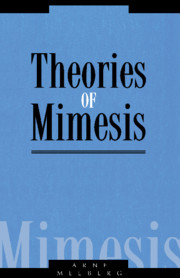3 - Rousseau's “Rêverie”
Published online by Cambridge University Press: 04 December 2009
Summary
Julie: presence, distance
Letters need distance: you rarely write to someone standing at your side. Letter-writing between lovers normally does not compensate for physical intimacy and presence. In Rousseau's epistolary novel Julie of 1760, every participant is obsessed with love, but they write obsessively to each other because of distance. In this first section of my chapter on Rousseau dealing with Julie I will give some examples of his novelistic letter that carefully measure distance in time and space while powerfully expressing longing and the need for proximity, identity and simultaneity, i.e. for the presence indicated by love. These examples will revolve around Rousseau's handling of fiction and some adjoining concepts like “rêverie” and “chimère” in a dialectic of proximity and distance. This dialectic strikes me as analogous to those I have been tracing as mimesis in Plato and imitatión in Cervantes, at least in the elementary meaning that the concepts involved allow for divergent readings, with Time as the point of diversion. Mimesis understood as imitation is an obsessive idea in Rousseau's educational mind, as shown in Julie and still more in Èmile. Even more interesting is the dialectic suggested above as Rousseau – as the first, I believe – develops a phenomenology of silence and distance. I will then follow this development in Rousseau's handling of the Self and the problems of writing his Self in Confessions. Finally, I shall consider how in his last work, Les Rêveries, he tries to develop the concept of “rêverie” into a mediator between time, presence and distance.
- Type
- Chapter
- Information
- Theories of Mimesis , pp. 85 - 129Publisher: Cambridge University PressPrint publication year: 1995

